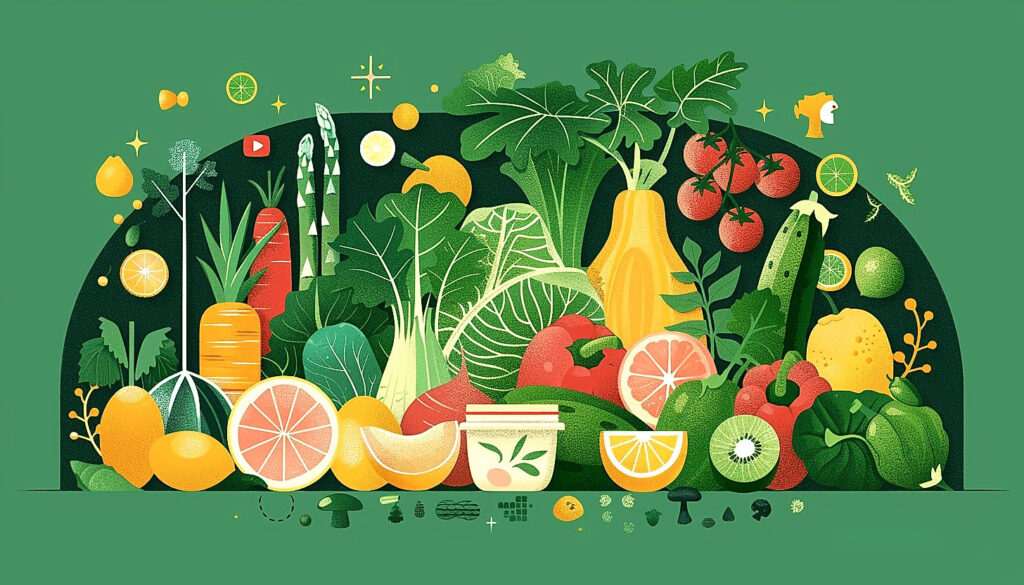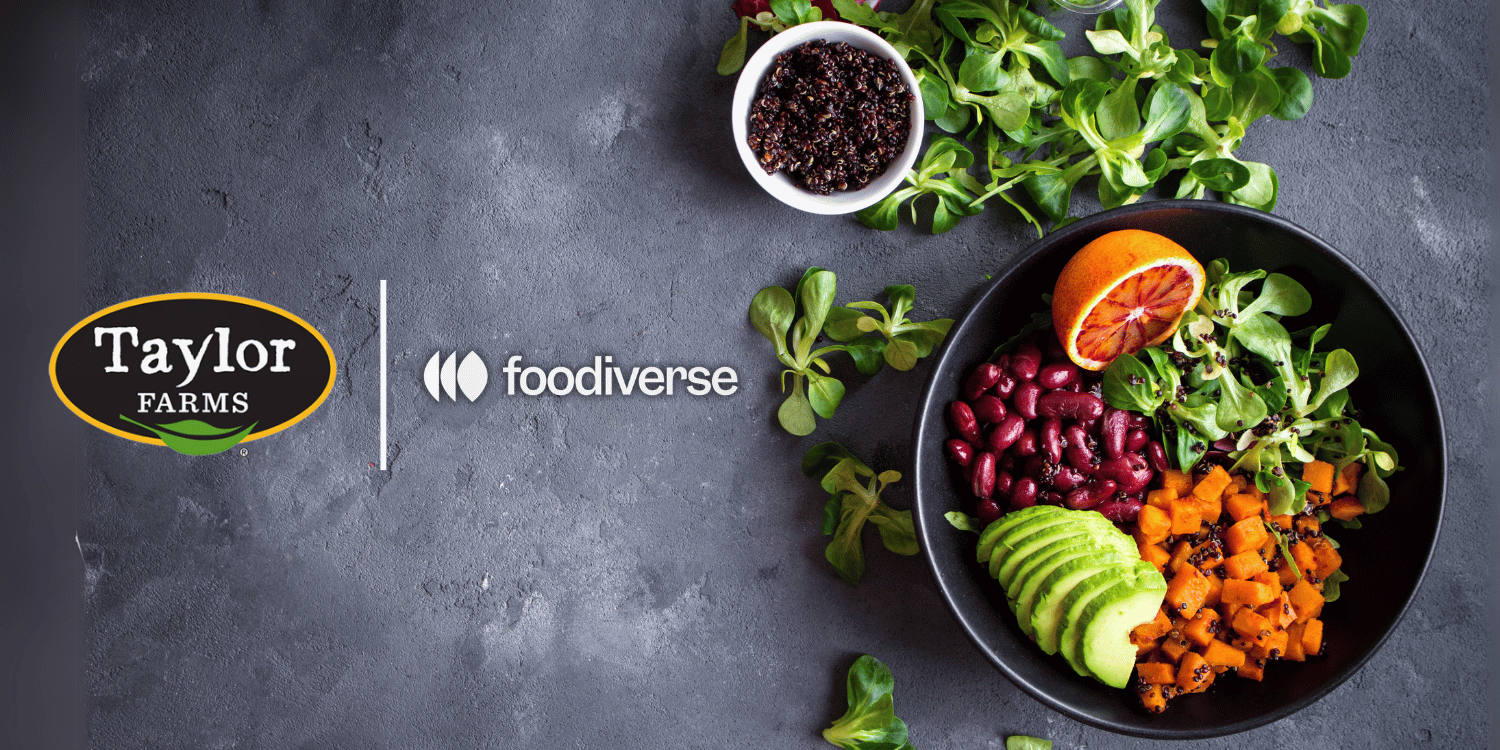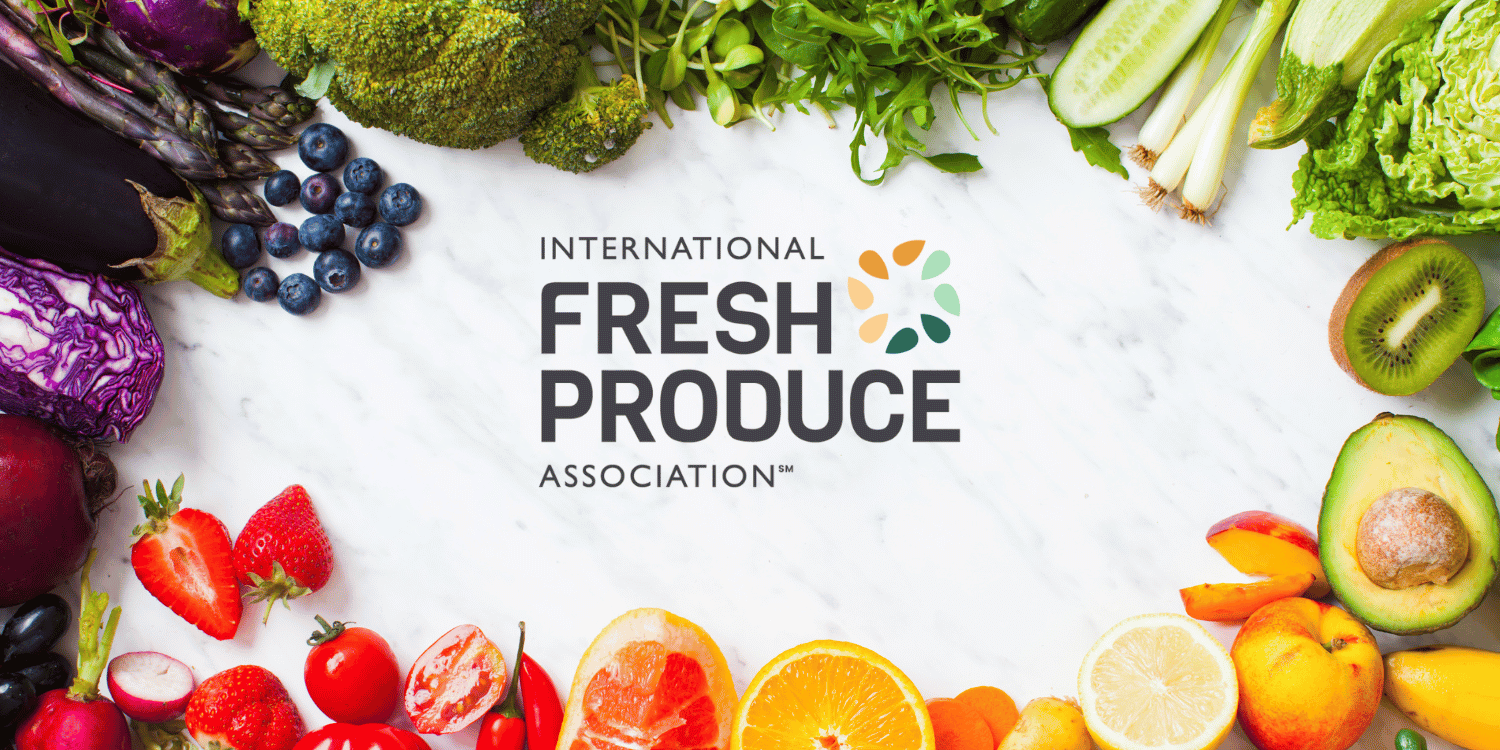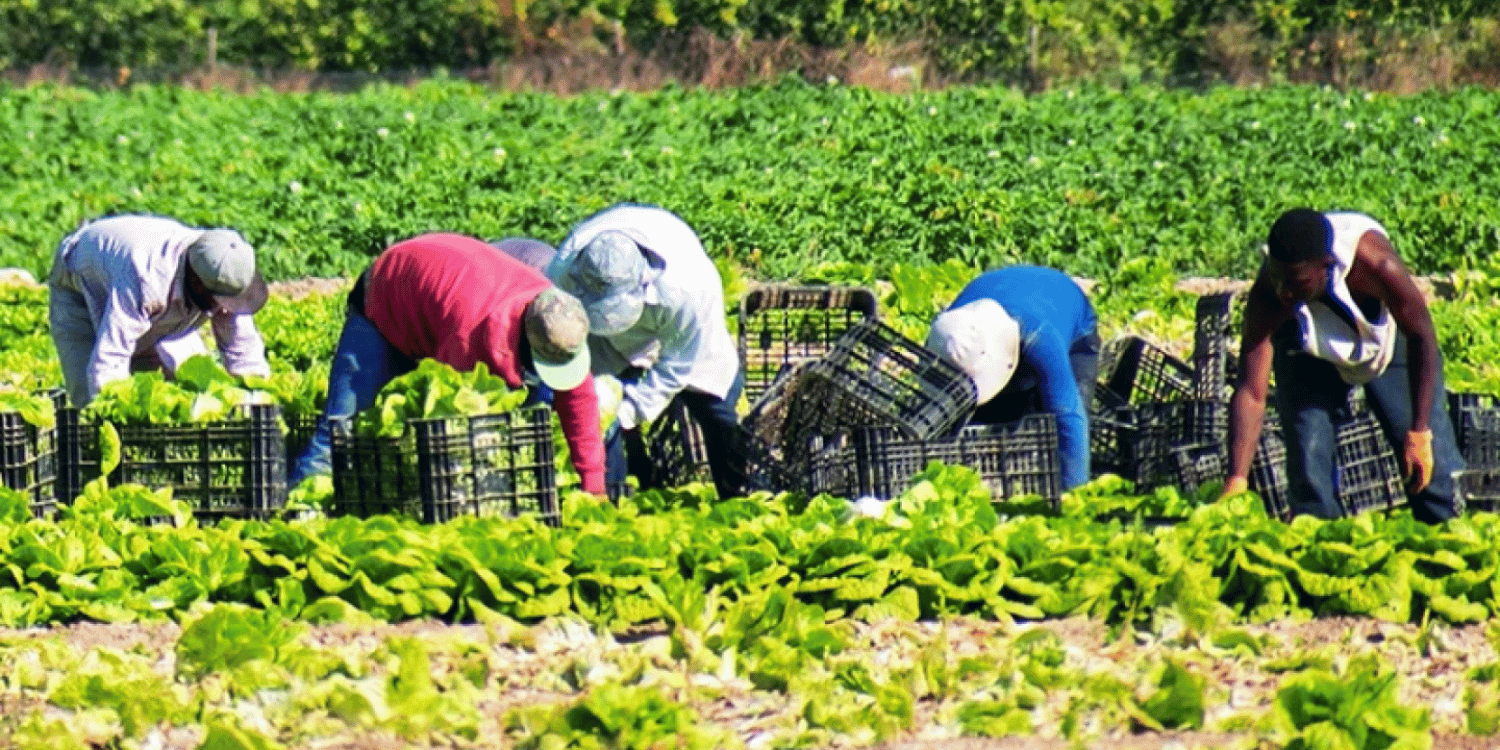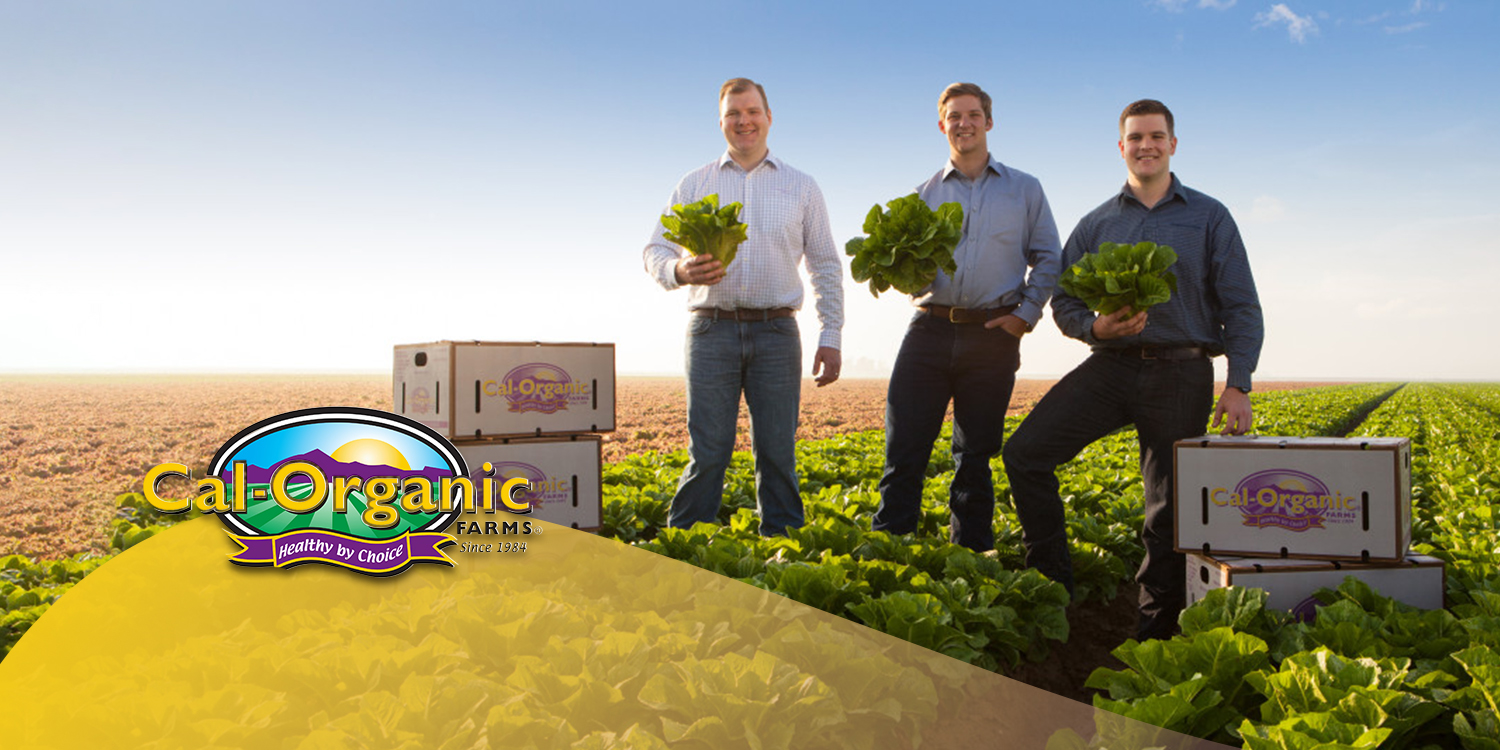Building a successful produce brand is much more than just growing quality fruits and vegetables.
It requires a strategic approach that focuses on both appealing to consumers and attracting retail partners.
In the increasingly competitive world of agriculture business, differentiating your product from the rest is critical.
This blog provides readers with actionable insights to help you navigate this process effectively.
The aim is to help you build a brand that resonates with your target market and, most importantly, with potential retail partners.
Understanding the traits that retailers seek in a produce brand can serve as a fundamental guide in your branding strategy.
- Create a distinctive and easily recognizable logo.
- Adopt sustainable, ethical farming practices.
- Demonstrate consistency in delivering high-quality produce.
- Show proof of positive feedback from clients.
- Use attractive and eco-friendly packaging materials.
The insights provided serve as a great starting point in building a brand that appeals to retail partners. However, we are eager to continue sharing more knowledge to help you achieve this goal.
In the following sections, we will explore how strong customer relationships and innovative marketing strategies can further strengthen your brand. We’ll also unpack how to leverage technology effectively to gain a competitive edge.
This guidance will be extremely valuable to you, as it provides a comprehensive view of how to create a brand that stands out among retail partners. The knowledge to follow is crucial for any business looking to scale and succeed in today’s competitive market.
Contents [hide]
- Tips On Building A Produce Brand That Attracts Retail Partners
- 1. Develop a unique, easily recognizable logo
- 2. Practice Ethical, Sustainable Farming Methods
- 3. Offer High-Quality, Fresh Produce Consistently
- 4. Demonstrate Proof of Positive Client Feedback
- 5. Employ Attractive, Environmentally-Friendly Packaging
- 6. Ensure Effective and Reliable Supply Chain Management
- 7. Stay Updated with Market Trends and Demands
- 8. Offer Competitive Pricing and Promotional Activities
- 9. Exhibit Transparent Company Information
- 10. Build and maintain a solid social media presence
- The Bottom Line
Tips On Building A Produce Brand That Attracts Retail Partners
1. Develop a unique, easily recognizable logo
In Short: A unique, easily recognizable logo plays a crucial role in building any brand as it visually communicates the brand’s values, mission, and vision. Elements such as color, font, and imagery should reflect the brand’s personality and be scalable and versatile, while maintaining simplicity and uniqueness to effectively attract retail partners.
Developing a unique, easily recognizable logo is a critical first step in building any brand, including a produce brand. A logo essentially represents your business and communicates to customers what your brand stands for.
You may wonder why logos are so crucial in attracting retail partners. Logos create a visual identity, which helps establish trust, reliability, and loyalty. A logo is not just a simple image, but a powerful tool to convey your brand’s mission, vision, and values.
When developing your logo, consider your brand’s unique identity. It’s essential that every aspect of your brand, including your logo, aligns with your brand’s personality and values. If you endorse ethical, sustainable farming methods, your logo could indicate this through specific colors, shapes or symbols.
To create a logo that truly stands out, consider bringing in professional designers. Professional designers are skilled at translating ideas into visual representations and can help ensure that your logo communicates the right message to potential retail partners.
Before you start developing your logo, there are few factors you need to consider. These factors directly relate to the effectiveness of your logo. They’re listed below:
- Color: Color heavily influences how a brand is perceived. For instance, green is often associated with health and the environment and might be a suitable hue for a brand promoting ethically sourced produce.
- Font: Typeface options should be easy to read, and reflect the brand’s personality. For instance, a brand that targets high-end retail partners might choose sophisticated, elegant fonts.
- Imagery: Imagery captured within your logo should ideally hint at the nature of your business. Icons representing fruits or vegetables, for example, could immediately help clarify that your business involves produce.
- Simplicity: Keep your logo design simple. Overly complicated logos can confuse potential retail partners about your brand’s values and offerings.
Another important thing is that your logo needs to be scalable and versatile. It should look good in different sizes, across different mediums and backgrounds. From business cards to billboards, digital ad banners to product packaging – your logo should maintain its integrity.
Pro Tip: Developing a unique, easily recognizable logo is key in building any brand, as it represents your business, communicates your brand’s mission, needs to be scalable and versatile, and must be able to differentiate you from the competition.
Lastly, your logo must be unique to avoid any potential confusion with competitors. A unique logo can help enhance your brand recognition and differentiate you from the competition, which is an invaluable asset when attracting retail partners.
In essence, a good logo is important in building a strong brand. It’s the identifier that connects you, your products, and your customers. By capturing the essence of your brand values and presenting it visually, your logo can easily attract retail partners and establish successful, enduring relationships.
2. Practice Ethical, Sustainable Farming Methods
In Short: Brands aiming to attract retail partners should prioritize ethical, sustainable farming practices, as this resonates with both retailers and increasingly eco-conscious consumers. Key sustainable farming methods include soil health maintenance, water conservation, and minimal use of synthetic chemicals, strengthening a brand’s image and differentiating it in a competitive marketplace.
As a brand that’s looking to attract retail partners, it’s absolutely imperative to ensure that your farming practices are ethical and sustainable. Retailers today are increasingly conscious of the sourcing methods and sustainability practices of the brands they partner with.
This awareness is not just due to their personal beliefs but also because they know their customers care about these issues. Consumers today are more environmentally conscious and will be more likely to support brands and retailers who align with their values.
Practicing ethical, sustainable farming methods doesn’t just boost your brand’s image—it also benefits your bottom line. When farming practices are sustainable, you’re able to use your resources more efficiently, minimizing waste and maximizing yield.

To successfully implement such methods, there are some key principles to consider. Here are a few:
- Maintain soil health: Healthy soil is crucial to sustainability. Methods like crop rotation and cover cropping preserve soil health by preventing nutrient depletion and promoting beneficial microorganisms.
- Practice water conservation: Overuse of water not only depletes natural resources but can also lead to soil erosion and decreased crop productivity. Sustainable farming techniques such as drip irrigation and rainwater harvesting can conserve water.
- Minimize chemical usage: Reducing the use of synthetic fertilizers and pesticides is key to sustainable farming. Instead, opt for organic alternatives or use integrated pest management strategies.
By demonstrating your commitment to ethical, sustainable farming methods, you’re sending a strong message to potential retail partners that your values are aligned. You’re showing them that you care about more than just profits—you also care about the environment and the future of our planet.
This commitment not only resonates with retailers but also their customers. In a marketplace where competition is fierce, this can be the differentiating factor that helps your brand stand out in the eyes of retailers.
However, practicing these methods is only half the battle. It’s just as crucial to communicate these practices effectively to your audience. Be transparent about your farming methods and showcase them in your marketing materials.
I want you to remember, a picture is worth a thousand words. Show, don’t just tell. Images or videos of your farms, workers, and the processes you follow can boost the credibility of your claims. After all, potential retail partners will have peace of mind knowing that they’re partnering with a brand that is true to its word.
Pro Tip: As a brand seeking to attract retail partners, prioritize practicing ethical and sustainable farming methods, as this not only bolsters your brand image and efficiency, but also resonates with environmentally conscious retailers and consumers.
Above all, remember that sustainable farming isn’t a one-time decision—it’s a commitment. It requires constant learning, adapting, and upgrading practices as more information becomes available. Being open to innovation and persistently seeking to improve is what will keep your brand at the forefront in the long run.
Moving forward, it’s not just about what your brand stands for, but also how it stands up for what it believes in. When you practice ethical, sustainable farming methods, you’re supporting a movement that benefits us all–
3. Offer High-Quality, Fresh Produce Consistently
In Short: Offering high-quality, fresh produce consistently is key to building a brand’s reputation and trust with retail partners. Attention to every detail, from quality seed selection to delivery, and utilizing technologies can ensure quality and consistency, thereby enhancing brand reputation and growth.
To create a strong reputation in the produce market, a brand must strive to consistently offer high-quality, fresh goods.
This consistency is key in building trust with retail partners since it assures them that their customers will be satisfied with their purchase every time.
This does not only require attention to the growth process but also to the handling, packaging, and delivery of the produce.
Pushing for the provision of flawless produce with great taste, appearance, and shelf-life is one of the essential goals a brand should focus on.
Now, achieving consistency is much easier said than done. It requires meticulous planning, execution, and monitoring of various elements.
Let’s now look at how some of these elements come into play:
- Quality Seed Selection: A good start is crucial, and this necessarily revolves around identifying and sourcing high-quality seeds.
- Farming Practices: Employing sustainable farming practices boosts soil health, aiding the growth of high-quality produce.
- Regular Health Checks: Preventive measures and regular assessments help avoid disease and pest manifestations, allowing produce to flourish.
- Harvesting and Post-Harvest Handling: Proper harvesting techniques and post-harvest handling are crucial in preserving the produce’s freshness.
- Packaging: As we’ll discuss in depth later, excellent packaging is important in maintaining produce quality and preventing damage during transport.
This attention to detail in every step of the production and supply process ensures the quality of the produce is maintained.
It might be challenging dealing with the variables that nature provides, but being proactive can mitigate potential risks that could affect the consistency of your produce.
To this end, implementing technologies like greenhouse farming and automated irrigation systems can drastically improve both the quality and consistency of your yield.
Customer needs and expectations are continuously evolving; hence, it’s important to continually review and enhance your produce quality protocols.
Don’t forget, your commitment to quality is a direct demonstration of your respect to your consumer, and that commitment will be reflected in your brand’s reputation.
Retail partners will be more confident to establish long-term relationships with a brand known to value and maintain excellence in quality and consistency.
By successfully implementing this approach, your brand stands a higher chance of attracting and retaining reliable retail partners, encouraging the growth of your produce brand.
4. Demonstrate Proof of Positive Client Feedback
In Short: Demonstrating positive client feedback is vital to establishing your brand in the produce market, helping enhance trust and build conversations with potential retail partners. Collecting and transparently showcasing customer reviews, criticisms, testimonials, and stories not only enhances your brand’s reputation but also reflects its dedication to quality and customer satisfaction.
Establishing your brand in the crowded produce market necessitates the demonstration of positive client feedback.
Potential retail partners are more likely to associate with your brand when they see genuine proof of satisfied, returning customers, thus, making customer feedback an integral part of your brand’s story.
Practically, this not only builds trust but also acts as a healthy base for conversations with possible retail partners and consumers.
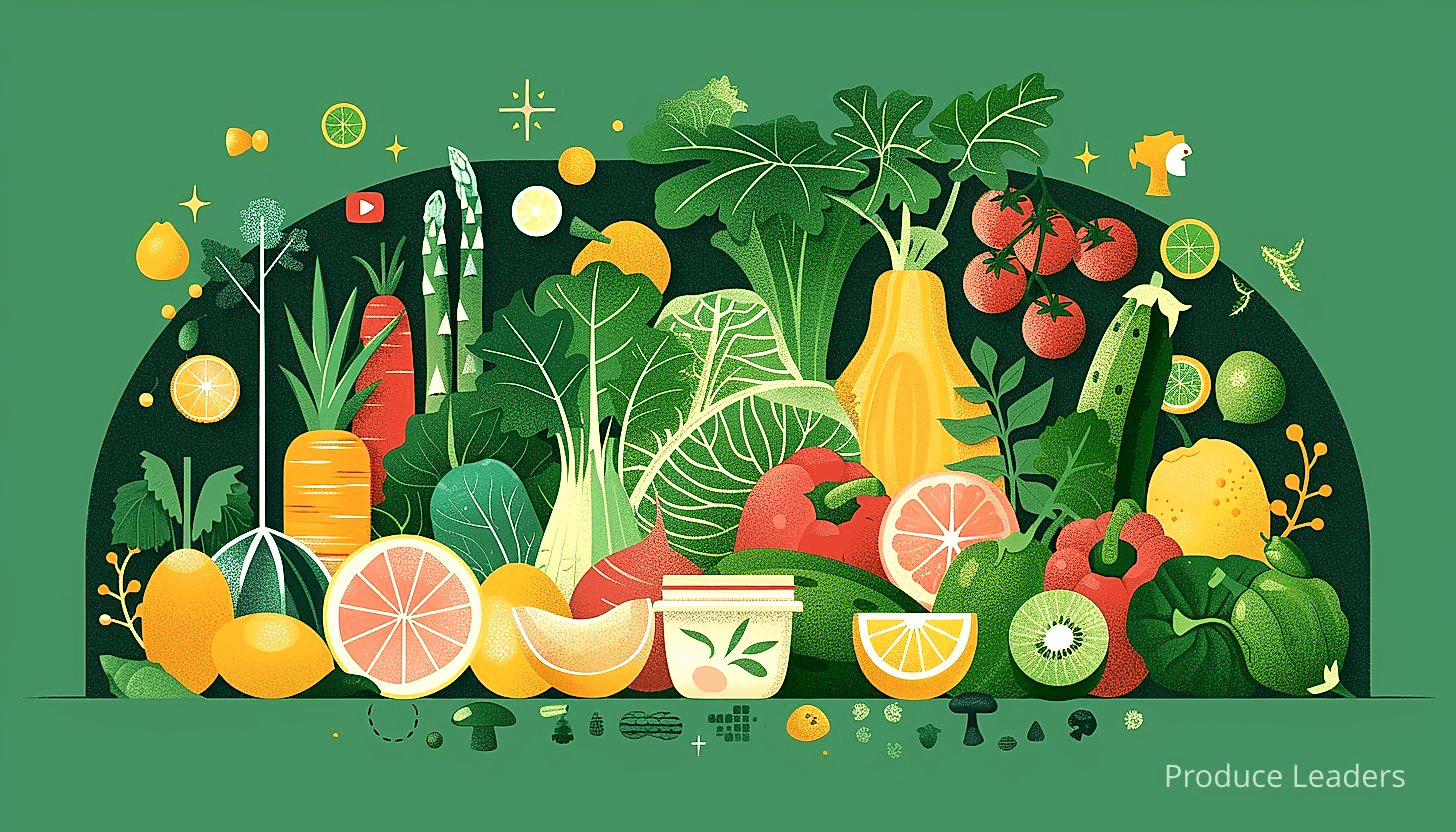
Creating a transparent system for collecting and displaying customer reviews is critical in this stage.
I want you to remember, the key here is not to only highlight the good but also show that your brand can handle criticism positively.
How you handle negative feedback showcases your brand’s character and commitment to customer happiness.
Here are some proven ways to gather and showcase positive client feedback:
- Directly invite your customers to leave a review after making a purchase or using your products.
- Reach out to customers through social media or email to solicit their feedback.
- Create a dedicated section on your website for customer testimonials and reviews.
- Collaborate with bloggers and influencers in your niche for feature reviews.
- Share customer stories and experiences with your produce to humanize your brand.
It’s also important to remember that feedback isn’t just a brand-building tool.
It’s a valuable resource that can help you improve your products and overall brand.
Pay close attention to your client’s reviews, identify common praises or complaints, and use this information to effectively improve your product offerings.
Providing your retail partners with tangible proof of positive customer feedback not just positions your brand favorably, but it demonstrates your brand’s dedication to quality and customer satisfaction.
I want you to remember, each piece of positive feedback you receive contributes to your brand’s voice and story.
No matter how great your produce is, it’s your satisfied clients who become the true ambassadors of your brand.
Developing a produce brand that draws retail partners is a complex endeavour which necessitates planning, strategy, and persistence.
The confidence that retail partners place in your brand will increase as the proof of positive client feedback become more and more visible.
The ultimate goal is to create a brand story that resonates with both clients and retail partners alike.
Important: Demonstrating positive client feedback and handling criticism positively is vital for establishing your brand in the crowded produce market, as it not only builds trust but also acts as a healthy base for conversations with potential retail partners and consumers.
By showcasing your positive client feedback, you signal to potential retail partners that consumers not only like your products, they trust your brand and are delighted by their experiences.
This helps create a positive perception of your brand, encouraging more retail partners to consider stocking your produce.
5. Employ Attractive, Environmentally-Friendly Packaging
In Short: Attractive, eco-friendly packaging plays a critical role in boosting brand recognition by reflecting a company’s commitment to sustainability. Implementing biodegradable or recyclable materials, functional designs and education about environmental benefits can significantly improve brand perception and cater to changing consumer trends.
Creating strong brand recognition is not only about having a quality product but also about the message your product communicates to the consumers. If you are looking to build a produce brand that attracts retail partners, considerable thought should be given to your packaging. It’s not just about attractiveness; the package also needs to be environmentally friendly.
Let me tell you, how does one develop attractive, eco-friendly packaging? It begins with understanding that it’s not just about visual appeal. The very core foundation of it is your brand’s commitment to sustainability and the environment.
Appealing to emotion, particularly the sentiment of environmental responsibility, has become an essential factor increasingly significant in consumers’ buying decisions. The response towards packaging is often emotional, and incorporating eco-friendly elements can strengthen positive brand perception significantly.
Firstly, using biodegradable materials, such as plant-based packaging, is a good start. Not only is it helping to reduce plastic waste, but it also sends a clear message to consumers and retail partners about your dedication to the cause. The use of this kind of material can significantly influence the perception of your brand.
Now, let’s dive into a few key elements to consider when developing attractive, environmentally-friendly packaging:
- Material: An important aspect to consider is using bio-degradable or recyclable materials. Your choice of material speaks volumes about your brand’s commitment to sustainability.
- Design: The design should not only be attractive but also functional. It should provide sufficient protection to the produce and be easy to handle. Aesthetic appeal is important, but functionality should not be overlooked.
- Educative: Consumers value knowledge. Including facts about the environmental benefits of the chosen packaging material can help strengthen your brand’s green image.
Keep in mind, every brand element should be consistent with the overall brand experience. Your packaging should reflect your laser focus on quality products, sustainable farming methods, and transparency in operations.
Another crucial aspect is to regularly review and enhance your packaging to match the changing consumer trends and demands. Stay ahead by incorporating innovative solutions and flexible design options to meet these requirements.
As companies continue to innovate, producing new and better sustainable packaging solutions, there exists a vast landscape of opportunities for differentiating your brand through environmentally friendly packaging.
Pro Tip: Consider using attractive, eco-friendly packaging to strengthen positive perception of your brand, as it not only appeals to consumers’ environmental responsibility, but also communicates your brand’s commitment to sustainability.
This indeed means an investment in the initial stages. But considering the long-term benefits, including increased customer loyalty and brand differentiation, it’s an investment that affords compelling returns.
It’s no longer just a ‘nice-to-have’ but more of a ‘need-to-have’ option for companies that are serious about their brand image and the message their products send to the market. The power of eco-friendly packaging in driving business success cannot be overstated.
6. Ensure Effective and Reliable Supply Chain Management
In Short: Effective and reliable supply chain management (SCM) is key to building a strong produce brand, involving aspects like sourcing, packaging, and delivery of products to retail shelves. Utilizing trusted suppliers, advanced logistics, efficient farming practices, and modern tech-enabled systems can ensure consistent deliveries, increase brand credibility, enhance customer loyalty and allow for expansion of market share.
An undeniable aspect of building a strong produce brand that is attractive to retail partners is ensuring effective and reliable supply chain management.
Supply chain management, often abbreviated as SCM, is fundamentally concerned with the effective flow and maintenance of goods and services from the point of origin to the point of consumption.
In the context of a produce brand, this intricate web includes aspects such as sourcing of products, cultivation, packaging, transportation, as well as the successful delivery of the fruits, vegetables, or other agricultural produce to retail shelves.
The importance of SCM in the attractiveness of a retail partner shouldn’t be underestimated. It’s worth noting that a successful SCM demonstrates assured consistency in delivery, which is a focal point for many retail partners.
Retail partners are counting on your ability to keep their shelves stocked with fresh, high-quality produce on a regular basis to meet their customers’ demand.
The following are some proven methods for ensuring effective and dependable SCM:
- Up to date logistics management to ensure prompt, efficient delivery of produce
- Implementing sustainable and efficient farming practices
- Integration of modern, tech-enabled systems for tracking and managing supply chain operations
No matter how exceptional the quality of your produce may be, erratic supply can damage your brand’s reputation and deter retail partners from doing business with you.
Moreover, having an effective SCM system provides you with a real-time overview of your supply chain, making it possible to spot and rectify issues promptly, before they affect your retail partners.
This instills a level of trust and reliability in your brand.
Employing a reliable SCM ultimately leads to increased brand credibility, which in turn inspires customer loyalty and retention.
It also paves the way for your produce brand to expand its reach to other potential retail partners, hence broadening its market share.
Important: An effective and reliable supply chain management is crucial for building a strong produce brand, as it ensures consistent delivery of high-quality goods to retail partners, thus increasing brand credibility and attracting customer loyalty and retention.
Not only does a well-functioning supply chain management give your produce brand a competitive edge, but it also forms the bedrock upon which the brand’s long-term success is built.
Bearing in mind the dynamic nature of the retail environment, it’s important to continuously improve and adjust your supply chain methods in accordance with new market trends and demands.
7. Stay Updated with Market Trends and Demands
In Short: Keeping updated with market trends and demands is crucial in creating a profitable, customer-focused produce brand. Understanding consumer needs allows brands to respond promptly, influence farming practices, enhance reputation, and foster consistency, facilitating an efficient, future-forward operation.
Understanding and staying updated with market trends and demands is a critical part of building a produce brand that attracts retail partners.
Market trends dictate which products will sell fast, bring more profit, and, importantly, increase customer satisfaction.
In the produce industry, these trends can be a result of various factors such as seasonal changes, dietary preferences, health, and wellness trends, or even a sudden viral recipe on social media.
Grasping these trends will position your brand to respond promptly to retailer needs and stay ahead of competitors by providing exactly what customers want at the right time.
Additionally, understanding consumer demand not only helps you stock up on the right merchandise but also influences your farming practices. By aligning your production with what consumers are likely to buy, you reduce wastage and increase efficiency.
Staying updated on market trends and demands requires a proactive approach and a combination of methods. Here’s a list of strategies that can be useful:
- Research: Regular industry research helps anticipate market shifts and drive decision-making. This can involve keeping an eye on industry publications, agricultural reports, and events.
- Data Analysis: Analyzing sales data can reveal patterns and trends in consumer behavior. It’s an effective way to understand what sells best, which products have seasonal demand, and help in forecasting future trends.
- Customer Feedback: Engaging directly with customers, retailers, and even suppliers can provide invaluable, real-time insights about market trends.
- Social Media Monitoring: Social platforms can be a window to current fads and hot topics. Watching these spaces can help presage upcoming trends and respond swiftly.
Staying connected with the market pulse helps in planning, making strategic decisions, and showcasing the ability to meet the rapidly changing demands of retailers and consumers.
For instance, imagine if a health trend emerges that demands more of a certain type of leafy green. If you’re attuned to the market, you’d be able to prepare, grow, and stock up on that particular produce just at the right time, meeting demand and maximizing sales.
Retail partners seek brands that are progressive, responsive to market demands, and exhibit an ability to adapt.
Moreover, staying updated with trends and demands helps shape your brand’s narrative, positioning your products in alignment with what customers want and need. This can be wielded as a strong marketing tool, hooking in more retail partners who believe in your brand’s vision and its ability to deliver.
In the end, keeping a finger on the pulse of market trends and demands is not just a strategy; it’s a necessity. It’s an investment that yields significant returns in terms of enhanced brand reputation, consistent retail partner interest, and, most important of all, the loyalty of consumers who feel seen, heard, and catered to.
8. Offer Competitive Pricing and Promotional Activities
In Short: Offering competitive pricing and engaging in strategic promotional activities crucially bolster your brand in the competitive produce market. These methods not only attract and retain customers but also enhance your brand’s visibility, leading to increased demand and long-term business sustainability.
When building a strong brand in the ever-competitive produce market, it is crucial to offer competitive pricing and engage in periodic promotional activities.
Your pricing strategy should be well thought out, taking into account both the cost of production and the market rate to ensure sustainability and competitiveness.
By keeping your prices competitive, you not only draw attention to your fresh produce, but also instill trust in your retail partners and customers about the value they’re getting.
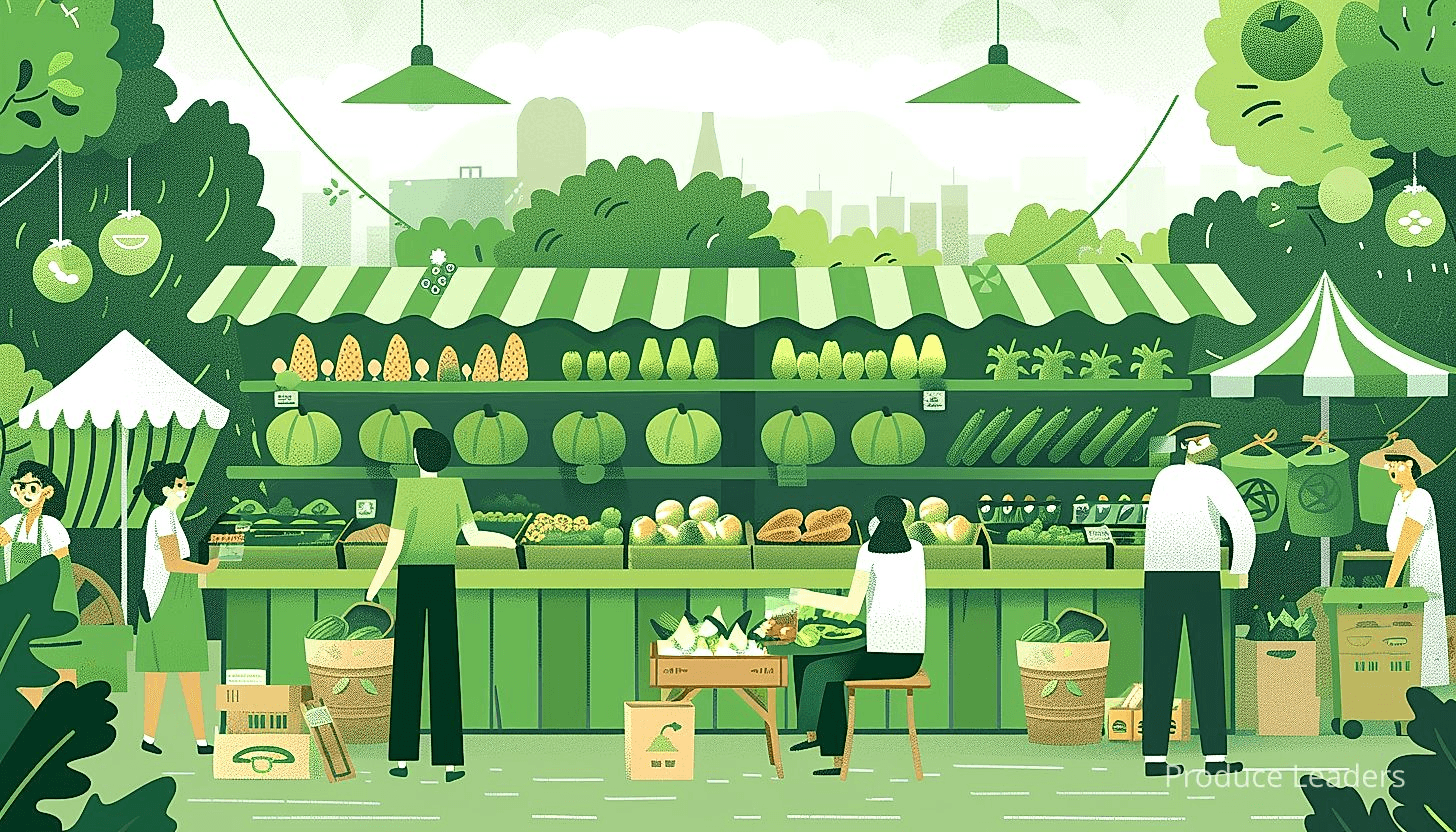
Just as important as pricing is your brand’s involvement in promotional activities.
Periodic promotions serve as a great way to boost sales, attract new customers, and retain existing ones.
These promotions could range from discounts, bundled offers, seasonal promotions, or loyalty rewards.
Before embarking on promotional activities, it’s crucial to understand that promotions do not just involve the slashing of prices but also the addition of value.
Some ideas for promotional activities include the following:
- Discounts: A popular promotional strategy is offering discounts on products. This could be seasonal or during harvest periods.
- Buy-one-get-one-free (BOGOF): This involves customers getting one product free when they buy a specific quantity. It’s effective in pushing inventory and attracting prospects.
- Loyalty Rewards: Having a loyalty reward system incentivizes customers to stick with your produce, as they receive perks for their patronage.
However, it is also important to realize that the effectiveness of your promotional activities largely depends on effective communication.
You must let your customers and retail partners know about your special offers through targeted advertising and marketing channels.
This would often involve highlighting your offers on your website, social media handles and even sending out newsletters via email.
In essence, a balanced mix of competitive pricing and effective promotional activities goes a long way in enhancing your produce brand’s visibility and appeal to both retail partners and final consumers.
Pro Tip: To build a strong brand in the produce market, ensure to offer competitive pricing and engage in regular promotional activities such as discounts, bundled offers, and loyalty rewards- this not only boosts sales and attracts new customers but also establishes trust and long-term relationships with your customers.
It helps establish a loyal customer base which is essential for increase in demand, thus boosting the growth and reputation of your produce brand.
I want you to remember, in all of this, the goal is not just about short-term sales, but creating a long-term relationship with retail partners and the entire customer base, which is important for a sustainable, thriving produce business.
9. Exhibit Transparent Company Information
In Short: Transparency in your business operations, including farming practices, sourcing, processing, and packaging, is crucial to building strong and positive relations with retail partners. Open and honest disclosures about details like origin of seeds, pest management, and environmental policies can bolster your credibility, trustworthiness, and reliability in the eyes of potential partners and customers.
As you seek retail partners for your produce brand, one key factor that can differentiate you from others is transparency in your company information.
This can be viewed as an extension of your commitment to ethical and sustainable farming practices.
Retail partners, like customers, are more likely to trust companies that provide clear and accurate details about their operations, including sourcing, processing, packaging and delivery methods.
The various facets of your business, from the seeds you plant, to the soil you use, to your harvesting methods, need to be presented transparently and honestly.
While it might take a bit more time and effort, transparency in your company’s dealings can create a strong and positive impression on your potential retail partners.
Transparency also substantiates your claim to offer high-quality, fresh produce consistently and can encourage retailers to carry your products with full confidence.
It’s absolutely essential to ensure that all the information you provide is accurate and up-to-date.
Inaccurate or misleading information can lead to a breach of trust, which will likely damage your relationships with retail partners, and your reputation as well.
Reputation is paramount in the produce industry, and once damaged, it can be incredibly hard to rebuild.
While no company is perfect, being transparent about your challenges and the measures you’re taking to address them can actually enhance your credibility.
The fact that you’re not concealing anything can give retail partners a level of comfort and confidence in doing business with you.
In the following list, we summarize some of the key aspects of your company that you might consider disclosing:
- Origin and quality of the seeds you use.
- Your farming and harvest methods.
- Your pest management strategy.
- The measures you take to ensure freshness and quality of your produce.
- Your packaging methods and materials.
- How you maintain consistency in your supply chain.
- Your company’s environmental policies and initiatives.
Discussing these details candidly with retail partners can pave the way for them to appreciate your honesty and integrity, and can help them see more value in partnering with you.
Important: Transparency in your company’s information, including your ethical and sustainable farming practices, sourcing, processing, packaging, supply chain, environmental initiatives and delivery methods, can differentiate your brand, build trust, and promote a positive impression with retail partners, substantiating your claim to deliver high-quality, fresh produce consistently.
At the end of the day, transparency in business is all about being open and honest, both with your retail partners and with your customers.
It’s not only a good practice, but also a significant factor that can make your produce brand more attractive and reliable in the eyes of retail partners.
10. Build and maintain a solid social media presence
In Short: To build a successful produce brand, it’s crucial to establish and maintain a strong social media presence, using it as a platform to educate, engage, and entertain potential retail partners. Consistency, interaction, collaboration, and authenticity are key strategies, enabling the brand to build relationships, gain trust, and create loyal customers.
When it comes to building a produce brand that attracts retail partners, an essential component is to consistently build and maintain a solid social media presence.
Digital means of communication are important in today’s global market, and having an effective online presence is non-negotiable for any brand that aims to be relevant and successful.
It is through social media platforms that brands can educate, engage, and entertain their audience, which includes potential retail partners.

Building a solid presence on social media platforms like Facebook, Instagram, Twitter, and LinkedIn, just to name a few, can help elevate your brand’s image and reputation.
The following are some key strategies for building and maintaining a strong social media presence:
- Consistency: It is crucial to regularly post informative and engaging content.
- Interaction: Responding to comments, messages, and feedbacks quickly and genuinely is key.
- Collaboration: Engaging with influencers and other complementary brands can boost your visibility.
- Authenticity: Your social media platforms should reflect the true values and identity of your brand.
If done effectively, maintaining a strong social media presence can turn your brand from an obscure entity to a well-known household name.
Remember too that this presence is not just about posting pictures and captions. It’s about building relationships, having meaningful engagements with your audience, and establishing trust.
Another advantage of a well-maintained social media presence is it allows retail partners a platform to evaluate your brand even before contacting you.
This creates an amazing opportunity for your produce brand to be proactive, to put its best foot forward, and to dictate the narrative of its brand story.
Also, social media presence is not about being on every platform out there. It’s about carefully choosing which platforms your potential retail partners are likely to be on and focusing your efforts there.
Pro Tip: To attract retail partners and build a strong produce brand, consistently maintain an authentic and relatable social media presence, focused on platforms your potential partners are likely to use, by posting regular and engaging content, interacting promptly, and establishing meaningful relationships.
As we all know, there’s no denying that social media is a powerful tool when building a produce brand that attracts retail partners. Harnessing it properly can lead to countless opportunities for growth and success.
In the end, though, like all attributes of your produce brand, your social media presence needs to be a true reflection of your brand’s values and goals. That authenticity will not only attract retail partners but will also create loyal followers and customers.
The Bottom Line
Building a favorable produce brand that stands out in the market entails strategic moves.
One cannot overlook the importance of quality while aspiring to steer a reputable brand.
It’s equally essential to communicate the brand’s story effectively to resonate with potential retail partners.
Lastly, an impressive design and presentation not only add value to your product but also increases its appeal among retailers.
Through this approach, a produce brand can secure a solid place in the market and create a lasting impression on retail partners.

